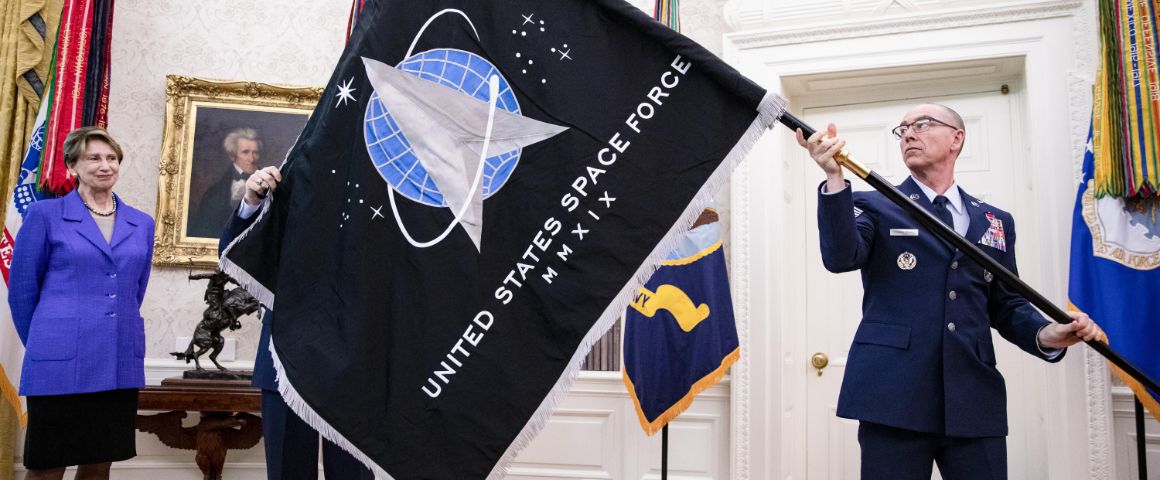Space Notes
By Hannah Middleton
There is so much going on, militarily and commercially, in space that it is impossible to cover it all. Here are a few snippets.
Bruce Gagnon from the Global Network Against Weapons & Nuclear Power in Space writes: “There has long been an attempt by the nuclear industry to move their deadly toxic project into space. The industry drools when it considers the profits by linking the atomic age with the space race. Early on, the Pentagon developed nuclear devices to power military satellites. Accidents happened during those days. Then in the 1980-1990’s NASA put deadly plutonium-238 on interplanetary space missions to provide on-board power sources. The Galileo, Ulysses and Cassini missions were loaded with pu-238. The NASA rovers currently driving around Mars taking soil samples for future mining operations are powered by plutonium-238. In addition, the mission is about developing space nuclear power for weapons.”
The office of Space Commerce will perform an astrodynamics evaluation of the tools SpaceX uses to manage more than 5,000 Starlink broadband satellites as part of the no-exchange-of-funds agreement. SpaceX uses an automated system to perform maneuvers to avoid potential close approaches with other space objects.
China reports that it plans to launch the Chang’e-6 lunar far side sample return mission around May this year. Chang’e-7 and Chang’e-8, launching around 2026 and 2028 respectively, will explore lunar resources at the lunar south pole and verify the in-situ utilization of these resources. These missions will be the basis for establishing the International Lunar Research Station in collaboration with international partners.
Northrop Grumman is developing the Deep Space Advanced Radar Capability (DARC) that will track objects in the geosynchronous orbit, protecting US and allied satellites. DARC is a global network of three advanced ground-based sensors to be operated in collaboration with AUKUS alliance partners, the United States, Australia and the United Kingdom. Earth’s magnetic field is crucial for navigation and protection from solar storms. A new study suggests that satellite mega-constellations could be tampering with our planet’s magnetism by depositing a shell of conductive material in the upper atmosphere.
A RAND study has found US commitments to space collaboration are hampered by clumsy execution. At least four Department of Defence organizations oversee space outreach to allies, each pushing different priorities and creating a complex web of classified disclosure rules that inhibit information sharing. The US is prioritizing increasing co-operation with its allies because Washington, with US$35 trillion in debt, cannot afford to pay for all its space warfare programs.
The Space Force’s Commercial Satellite Communications Office (CSCO) is buying Low Earth orbit satellite internet and is reported to be interested in small geostationary satellites and direct satellite-to-device links. CSCO manages satcom contracts worth about $7 billion. The Space Force also is buying new government-owned communications satellites.
The US Space Force has awarded US$66 million contracts each to Lockheed Martin and Boeing to design a new narrowband communications satellite that will expand the Mobile User Objective System (MUOS), a network of satellites used by the US military to transmit voice and data communications. The Space Force is expected to select one of the companies in 2025 to manufacture two flight-ready spacecraft.
Starlab Space, a joint venture of Voyager Space and Airbus Defence and Space, has announced an agreement with SpaceX to launch its commercial Starlab station on a single Starship launch.
NASA paid Intuitive Machines US$118 million to design, build and fly the first private spacecraft to land on the moon. The lander, ‘Odysseus’, broke a leg at touchdown before falling over, and was expected to lose power and go silent.
For NASA’s upcoming Artemis program, getting power to lunar bases is a top priority. The agency therefore created its Fission Surface Power Project to develop a small nuclear fission reactor to generate electricity on the lunar surface. Commercial companies Lockheed Martin, Westinghouse and IX were each given US$5 million contracts to develop fission reactor designs. A combination of solar and nuclear installations are planned to supply the electricity needs of habitats and science labs. NASA expects delivery of a system for use on the moon in the early 2030s.
Guardian (Australia)
Support socialist media!
If you found this article useful, please consider donating to People’s Voice or purchasing a subscription so that you get every issue of Canada’s leading socialist publication delivered to your door or inbox!
For over 100 years, we have been 100% reader-supported, with no corporate or government funding.




